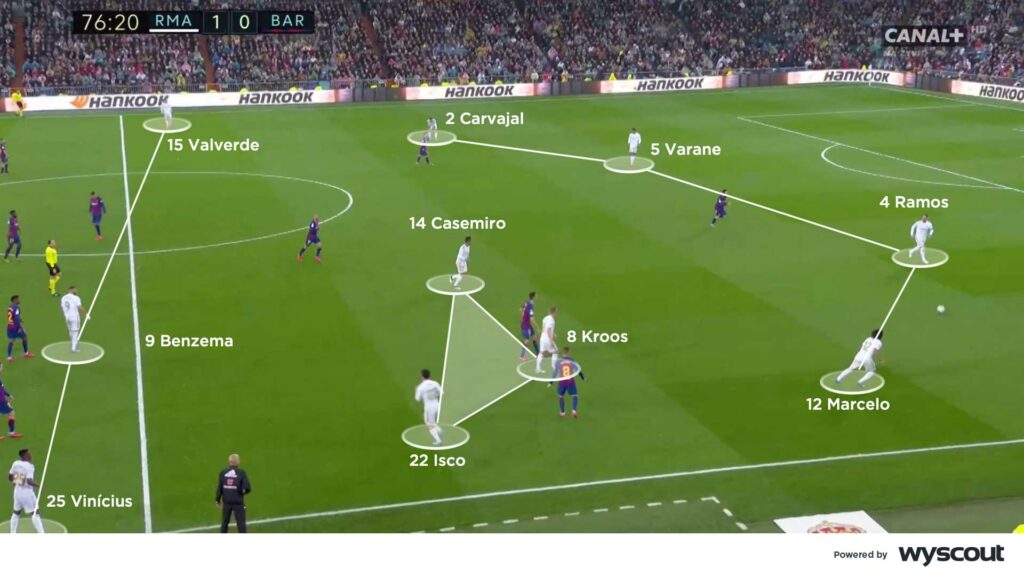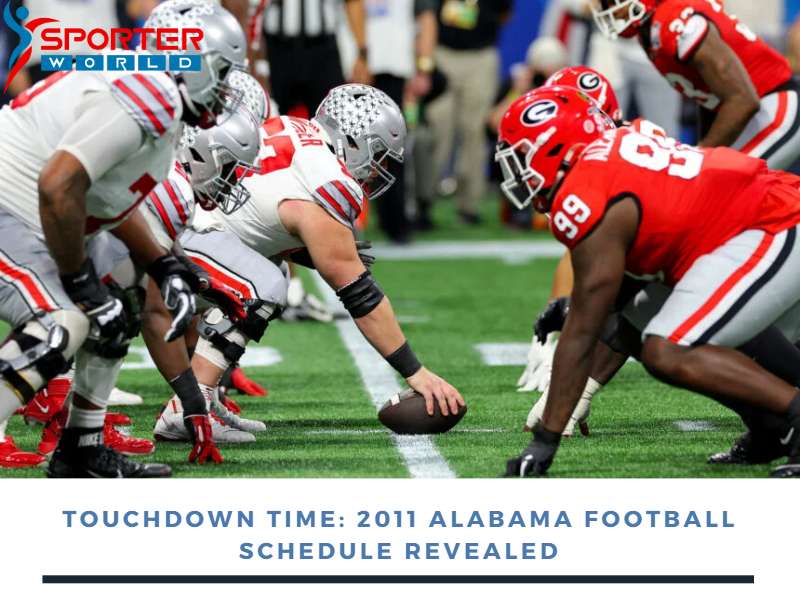Soccer tactical formations explained: Gain an understanding of different formations used in soccer. Soccer tactical formations play a crucial role in determining a team’s style of play and strategic approach on the field.
Each formation consists of a specific arrangement of players that is strategically designed to maximize defensive solidity, attacking prowess, and overall team balance. We will explore some of the most popular soccer formations, including the 4-3-3, 4-4-2, and 3-5-2, and delve into their advantages, disadvantages, and typical usage.
Whether you’re a soccer enthusiast looking to deepen your understanding of the game or a coach seeking to optimize your team’s performance, this guide will provide you with valuable insights into the world of soccer tactical formations. So let’s kick off and dive into the wonderful world of soccer formations!
Choosing The Right Soccer Formation
Choosing the right soccer formation is crucial for a team’s success. When deciding on the formation, there are several considerations to keep in mind. Firstly, analyzing the team’s strengths and weaknesses is essential. Understanding the players’ skill sets allows the coach to create a formation that maximizes their abilities. Secondly, the team’s style of play plays a significant role in formation selection. Different formations suit different styles, whether it’s a possession-based game or a high-pressing approach. Lastly, opponent analysis is vital for choosing the right formation. Studying the opposition’s tactics and tendencies can help tailor the formation to exploit their weaknesses. By carefully considering these factors, coaches can determine the optimal formation for their team’s success.
The Basics Of Soccer Tactical Formations
Understanding the structure of soccer tactical formations is essential for any player or fan of the sport. These formations dictate how players position themselves on the field and can greatly impact a team’s style of play. Player positions and roles within a formation play a vital role in the success of a team. Each position has specific responsibilities, such as goalkeepers guarding the net or forwards attempting to score goals. Formation diagrams are often used to visually represent how players are positioned on the field. The numbering system is used to assign specific roles to players based on their position within the formation. By understanding the basics of soccer tactical formations, players and fans can gain a deeper appreciation for the strategies and tactics employed during matches.
Common Soccer Formations
| Formation | Strengths and weaknesses | Ideal playing style | Notable teams that use this formation |
|---|---|---|---|
| 4-4-2 |
Strengths:
|
Ideal playing style focuses on a solid defense and midfield structure, with quick transitions and long balls to forwards. |
Notable teams: Manchester United, Argentina |
| 4-3-3 |
Strengths:
|
Ideal playing style involves high pressing, quick passing, and combination play to create goal-scoring opportunities. |
Notable teams: Barcelona, Brazil |
| 3-5-2 |
Strengths:
|
Ideal playing style emphasizes compact defending, quick transitions, and overlapping runs from the wingbacks. |
Notable teams: Italy, Atletico Madrid |
Attack-Minded Soccer Formations
4-2-3-1
The 4-2-3-1 formation is an attack-minded formation that focuses on creating scoring opportunities. Its strength lies in providing defensive stability with two holding midfielders, while the three attacking midfielders support the lone striker. Ideal for teams with strong wingers and creative playmakers, this formation enables quick transitions and provides options for both short passes and long balls.
However, the 4-2-3-1 formation has weaknesses too. The lone striker may become isolated if the attacking midfielders don’t provide enough support, affecting goal-scoring chances. Additionally, the narrow defensive shape can be vulnerable to wide attacks from opponents.
Notable teams that use the 4-2-3-1 formation include Bayern Munich, Real Madrid, and Manchester United.
3-4-3
The 3-4-3 formation is another attack-minded approach that offers additional offensive options. With three central defenders and wingbacks, this formation allows for greater defensive coverage and effective overlapping runs. The four midfielders provide strong support in both attack and defense.
One of the strengths of the 3-4-3 formation is its ability to overwhelm opponents with numerical advantages. The three forwards create constant goal-scoring threats while maintaining balance in midfield. However, this formation can be susceptible to counter-attacks, especially if the wingbacks are caught out of position.
Teams like Barcelona, Ajax, and Chelsea have successfully employed the 3-4-3 formation.
Defense-Minded Soccer Formations
The 5-4-1 formation in soccer is recognized for its solid defense and is often employed by teams seeking to maintain a strong defensive shape. This formation enhances defensive solidity by deploying five defenders, four midfielders, and one lone striker. The formation’s primary objective is to restrict the opposition’s attacking options and create a compact defensive unit. Its strength lies in providing excellent defensive coverage, with five defenders forming a strong backline. However, the 5-4-1 formation lacks attacking prowess due to limited numbers in the forward areas.
On the other hand, the 4-5-1 formation is another defense-oriented system but offers more flexibility in the midfield. This setup utilizes four defenders, five midfielders, and a single striker. The primary strength of this formation is a crowded midfield, making it challenging for opponents to play through the center. The 4-5-1 formation allows teams to control the game and provide support to the lone striker, creating solid defensive and midfield structures. Notable teams known to utilize these formations include Italy and Greece.

Credit: m.youtube.com
Unique And Experimental Soccer Formations
Soccer Tactical Formations Explained
| Formation | Strengths and weaknesses | Ideal playing style | Notable teams that use this formation |
|---|---|---|---|
| 4-1-4-1 | A balanced formation that provides solid defensive cover and a strong midfield presence. However, it can lack offensive power and become vulnerable to counter-attacks. | An ideal playing style for the 4-1-4-1 formation involves patient build-up play, strong midfield possession, and quick transitions. | Notable teams that use this formation include Manchester City and Bayern Munich. |
| 3-6-1 | The 3-6-1 formation offers great passing options in midfield and allows for quick attacks. However, it can be exposed defensively and lack width in the attack. | Ideal playing style for the 3-6-1 formation is possession-based, with emphasis on quick passes, effective wing play, and active involvement of the lone striker. | Notable teams that use this formation include Barcelona and Manchester United. |
Adapting Formations During A Match
|
During a soccer match, the ability to adapt formations is crucial for a team’s success. **Analyzing in-game situations** is an important aspect of this adaptation process. Coaches and players need to assess the opponent’s tactics and make strategic substitutions accordingly. By studying the opponent’s gameplay, weaknesses can be identified and exploited. Making strategic substitutions can also be an effective tactic for adapting formations. This allows for fresh legs, new ideas, and increased energy on the field. Additionally, changing formations **on the fly** can catch the opponent off guard and create new attacking opportunities. Teams may choose to switch between attack-focused and defense-focused formations based on the game situation. For example, when leading, a team may opt for a more defensive formation to secure the win. Conversely, if trailing, a more attacking formation might be employed to increase the chances of scoring. |
Frequently Asked Questions Of Soccer Tactical Formations Explained
What Is 4 1 3 2 Formation And Tactics?
The 4-1-3-2 formation is a tactical strategy in soccer that consists of 4 defenders, 1 defensive midfielder, 3 attacking midfielders, and 2 strikers.
What Is 4 3 3 Tactical Formation?
The 4-3-3 tactical formation is a football strategy that consists of four defenders, three midfielders, and three attackers.
What Is 4 4 2 Formation And Tactics?
The 4-4-2 formation is a tactical setup in football with four defenders, four midfielders, and two forwards.
What Is The 3 2 3 2 Formation Tactics?
The 3-2-3-2 formation tactics consist of three defenders, two defensive midfielders, three attacking midfielders, and two forwards.
How Many Players Are Typically In A Soccer Formation?
A standard soccer formation consists of 11 players on the field, including a goalkeeper.
Conclusion
Understanding soccer tactical formations is crucial for teams to succeed on the field. Implementing strategic formations allows teams to optimize their performance by capitalizing on their strengths and minimizing weaknesses. Whether it’s the classic 4-4-2, the attacking 4-3-3, or the defensive 5-3-2, each formation offers a unique set of advantages and challenges.
Coaches must analyze their team’s strengths, weaknesses, and playing style to determine the most effective formation. Additionally, flexibility is key, as formations can be adjusted during a game to adapt to game situations and exploit opponent weaknesses. By understanding the role of each player within a formation and the overall tactical objectives, teams can effectively execute their game plans and achieve success on the pitch.
So, next time you watch a soccer match, pay attention to the formations and see how they impact the flow of the game.




